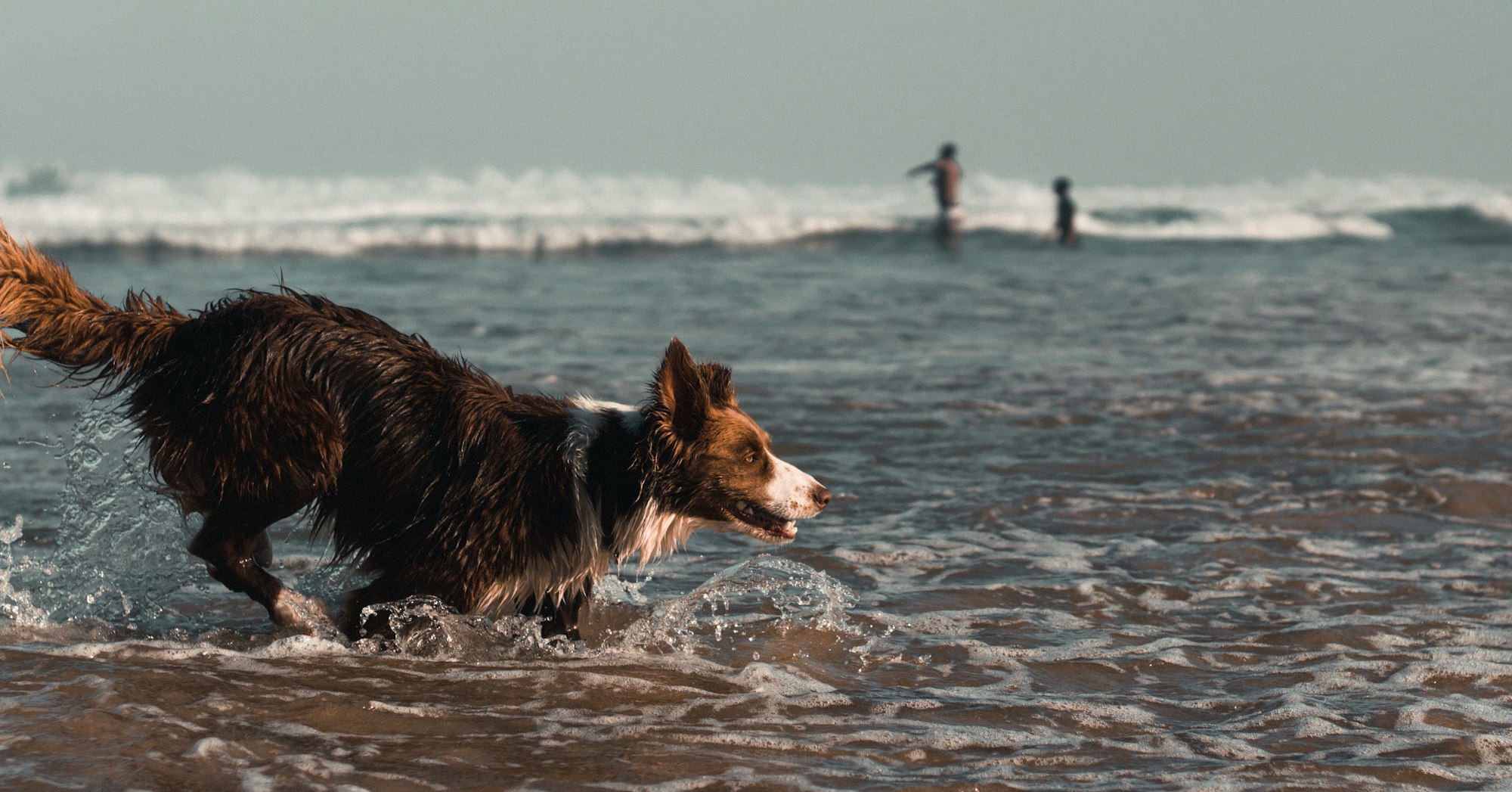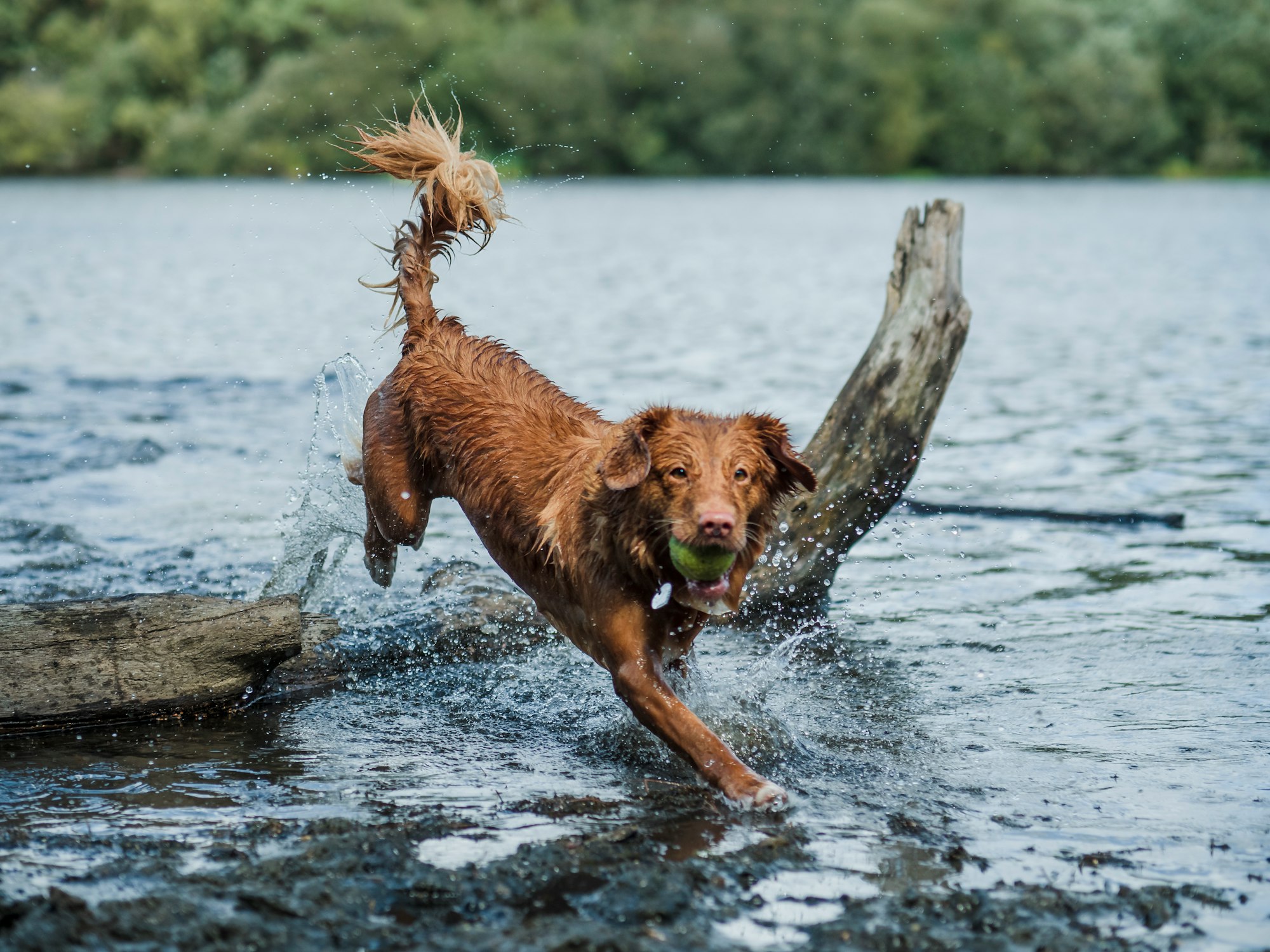Water intoxication in dogs is a less acknowledged yet critical concern. It manifests as a sudden onset of life-threatening conditions following excessive water consumption.
Understanding the causes, symptoms, and prevention strategies can prevent this potentially fatal condition. By being aware of these factors, caregivers can ensure safer water-based activities for their dogs while mitigating risks associated with overhydration.
In addition to prevention, knowing the treatment options for water intoxication in dogs is important. This knowledge can be crucial during emergencies, allowing caregivers to intervene effectively.
By understanding the causes, symptoms, prevention strategies, and treatment options, caregivers can take the necessary steps to keep their dogs safe and healthy.

What Is Water Intoxication In Dogs?
Water intoxication in dogs is a potentially fatal condition that occurs when excessive water intake disrupts normal electrolyte balance. This can lead to severe physiological complications. It is similar to an overflowing dam, as the body cannot quickly process the water influx. This results in dangerous electrolyte imbalances.
One of the main imbalances is a dramatic drop in sodium levels, as freshwater dilutes the concentration of electrolytes in the bloodstream. As a result, cells swell, causing neurological impairment and sometimes death. Lethargy, vomiting, and loss of coordination are common symptoms, which can be mistaken for fatigue or excitement.
Therefore, it is crucial to understand these symptoms and signs to watch out for to prevent water intoxication in dogs. This definition and explanation of water intoxication underscores how excessive water consumption can precipitate this perilous condition.
What Is Homeostasis?
Homeostasis refers to the ability of an organism or a system to maintain internal equilibrium by adjusting its physiological processes.
In water intoxication, homeostasis is disrupted when excessive water dilutes sodium, an essential electrolyte.
This condition, known as hyponatremia, triggers symptoms of water intoxication. Understanding Homeostasis from the below points.

Role in Electrolyte Balance:
- Sodium: Essential for cellular function and fluid balance.
- Water Intoxication: Excessive water disrupts sodium levels.
- Symptoms of Disrupted Homeostasis: Hyponatremia, This leads to nausea, seizures, or even coma.
- Treatment and Restoration: Treatment for Water Intoxication, Requires prompt medical intervention to restore homeostasis.
Just like a tightrope walker needs balance to stay aloft, cells need balanced electrolytes to function correctly; any imbalance can cause severe repercussions. Consequently, understanding homeostasis is pivotal in preventing conditions such as water intoxication.
How quickly does water intoxication happen in dogs?
In canine populations, the onset of hyponatremia due to excessive fluid intake can occur rapidly, often within a few hours, necessitating immediate veterinary intervention. This swift process, akin to a flash flood overwhelming a gentle stream, underscores the risk of water intoxication when dogs drink too much water.
The balance of electrolytes in their bodies becomes disrupted; the sign of water intoxication may surface subtly at first but could escalate quickly into life-threatening conditions.
Once it is suspected that a dog has water intoxication, understanding how quickly water intoxication happens in dogs becomes crucial for strategic and timely intervention.
Preventing water intoxication in dogs ultimately hinges on vigilance in monitoring their fluid consumption while ensuring ample opportunities to expel excess fluids regularly and naturally through urination.
Causes and Factors Contributing to Water Intoxication
Excessive play or exercise, especially in hot weather or shallow water environments, has been identified as a common cause of hyponatremia in canine populations. This phenomenon is often referred to as water intoxication in dogs.
Understanding these factors provides insight into the nature of this condition:
- Excessive play or exercise: Dogs engaging in high-intensity activities tend to ingest more water.
- Hot weather: Increased temperatures lead to higher hydration needs, potentially leading to overconsumption.
- Shallow water and water games: These scenarios can inadvertently encourage excessive intake.
Vividly imagine a dog playing fetch by the beach on a hot day. Each sprint back and forth under the sweltering sun increases its thirst while swallowing copious amounts of sea spray during retrieves. The combination creates an ideal setting for developing water intoxication.
What are the Potential Risks of Water Intoxication in Dogs?
Potential risks associated with hyponatremia in canine populations include severe organ damage, cerebral edema, and even fatality, thus underscoring the need for early recognition and immediate veterinary intervention.
Water intoxication can be likened to a ticking time bomb wherein every second counts towards diffusing potential dangers. This unassuming risk starts with water overload leading to hyponatremia, akin to flooding an engine; vital functions are disrupted, escalating rapidly to brain swelling and organ failure.
Analogous to a dam breach, the inundated brain swells beyond its rigid skull confines causing significant distress. Swift recognition of these signs is critical in mobilizing veterinary care for appropriate interventions.
Understanding the underlying menace of water intoxication becomes paramount in safeguarding canine health in this game of shadows and mirrors where symptoms might mislead.

Prevention and Safety Measures
Frequent breaks, moderated access to aquatic environments, and careful observation of canine behavior during activities involving high water exposure are recommended strategies to mitigate the risk of hyponatremia in dogs.
Consideration should be given to:
- Monitoring their dog's water intake during play or exercise
- This can prevent excessive ingestion and ensure a child does not overindulge in sweets.
- Similar to athletes needing intervals for rest and rehydration, this allows dogs to process ingested fluids.
- It is comparable to placing barriers on busy roads and safeguarding them from potential harm.
This type of water intoxication in dogs emphasizes prevention and safety measures as crucial components. Like a well-rehearsed dance, vigilance can ensure harmony between fun-filled activities and necessary caution.
Recognizing and Managing Water Intoxication
Transitioning from preventative measures, it is crucial to understand the recognition and management of water intoxication in canines. Identifying signs of water intoxication such as lethargy, vomiting, or loss of coordination equates to preventing a droplet from turning into an ocean, a metaphor symbolizing the potential fatal outcome.
Immediate veterinary attention becomes paramount upon recognizing these symptoms as the clock ticks against survival. Treatment options predominantly include fluid therapy and electrolyte management, analogous to replenishing a depleted battery.
By understanding these intricacies of managing water intoxication, owners are better equipped for swift action should their pet fall victim to this perilous condition, thereby transforming knowledge into power to combat this silent threat.
Educating Dog Owners
Educating canine owners on the risks associated with hydration and water activities is pivotal to preventing unnecessary harm to these animals. It is crucial for understanding water intoxication in dogs, its dangers, and prevention strategies.
Responsible Water Play:
- Limiting duration of water play
- Encouraging breaks during play
Hydration Practices:
- Providing fresh drinking water at all times
- Monitoring consumption during high activity levels
Safe and Enjoyable Water Activities for Dogs:
- Using specially designed dog toys that float above the water surface
- Supervised swimming sessions
These methods provide safeguards against the risks of water intoxication, ensuring safe and enjoyable activities for dogs and educating dog owners about possible hazards.
Frequently Asked Questions
Can Certain Breeds of Dogs Be More Susceptible to Water Intoxication Than Others?
Certain canine breeds, particularly those with high activity levels and smaller stature, have been observed to be more prone to water intoxication. However, comprehensive studies are required for a definitive understanding of this susceptibility.
Is There a Specific Age at Which Dogs Are More Prone to Water Intoxication?
Research indicates a lack of age-specific predisposition towards water intoxication in dogs. However, younger dogs with energetic dispositions may be at higher risk due to their propensity for vigorous and prolonged water-related activities.
How Long Does It Typically Take for a Dog to Recover From Water Intoxication?
Recovery duration from water intoxication in dogs varies based on severity, ranging from hours to days. Prompt medical intervention is critical; however, irreversible damage may occur with severe cases, prolonging recovery or causing permanent impairment.
Can Water Intoxication in Dogs Be Completely Cured or Can It Lead to Long-Term Health Issues?
Water intoxication in dogs can be successfully treated if detected early enough. However, severe cases may result in long-term health complications such as brain damage and difficulty maintaining balance, highlighting the importance of prevention measures.
Are There Any Medications or Supplements That Can Help Prevent Water Intoxication in Dogs?
No specific medications or supplements are known to prevent water intoxication in dogs. The most effective strategy remains carefully supervising the dog's water intake and activities involving water exposure.
Conclusion
In conclusion, water intoxication in dogs, akin to a silent tempest in a teapot, emerges subtly but has the potential to wreak havoc. It is an urgent call for vigilance and educated dog ownership.
As guardians of our four-legged companions, we must ensure their play does not metamorphose into peril. Through awareness and precautionary measures, we can ensure that each drop of water serves as a source of hydration rather than a harbinger of harm.

